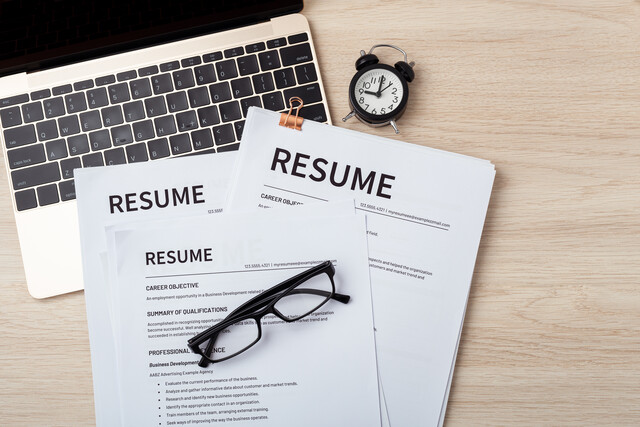Why a Portfolio?
Investing is not something that should happen in a vacuum. In fact, you should have a financial portfolio that includes --
o Investment portfolio
o Your home and other real estate
o The value of all your possessions
o A will
o Adequate life and health insurance
o Credit cards
o A budget
o A savings account
o A checking account
o Financial goals for short, medium, and long term
This financial plan is something that everyone should have and in most cases it should be assembled with the help of an investment adviser, an attorney, and an accountant. Each one of these professionals can help you with some aspect of your financial plan.
One significant component of your financial plan is your investment portfolio. This is made up of all the different kinds of investments you own, as well as the cash you have on hand, plus a profile about your investment style and strategies. An investment adviser can help you put together your investment portfolio. The best thing you can do is start putting together your financial plan/portfolio and bring it with you. The investment adviser may make significant suggestions based on other aspects of your plan.
|
True stories |
"As a former investment adviser, I saw many people who would come to me wanting to put together an investment plan. They were naturally skeptical of investment advisers - afraid that I would break the KYC law and try to sell them something that they didn't need - so they'd rarely tell me about all of their investments. What was funny, though, was that the more they told me, the more I could help them. When they were secretive about a certain piece of real estate they owned or another batch of stocks they held at another broker's office, I had no way of knowing so I would create an investment portfolio that would work for the situation I THOUGHT they were in. On many occasions, I would later discover that they had other investments; had they told me about them, I could have made a different portfolio that performed better, more safely, and often made them more money." -Former investment adviser |
Let's look at some of those factors now.
The 2 Types of Investments
There are two kinds of investments: equities and fixed income investments. These are sometimes called "ownership" and "loanership" investments because equities are owned (remember, you own a share of the company) and fixed income investments (like bonds, for example) are actually money you've loaned to other people. Let's look at them a little more closely:
Ownership investments: Ownership investments are the kind that you buy once and hold onto to sell later (at hopefully a higher price). The market might fluctuate up and down but it doesn't matter: the only thing that matters is the buying and selling price. These investments include stocks, your home and other pieces of real estate, art, collectibles, and fine wine. There is some risk to these investments (the price could drop instead of rise) but the reward can be pretty good in many cases. The secret is to hold onto these investments and sell them when the price is higher than what you bought it at.
Loanership investments: Loanership investments are the kind of investments where you lend your money to other people and they pay you interest to use that money and eventually give you back the principal. Bonds are the most well-known type of loanership investment. But your interest bearing bank account is also a loanership investment. So are government bonds. So are short term investments like CDs. These investments typically pay you back regular payments of interest (thus their name "fixed income"). At the end of the investment, you get your principle back, too. Sometimes, in the case of short term investments, there is only one fixed income payment. but the concept is still the same. Loanership investments are usually less risky and there is also less reward. The risk with this investment is that inflation could be greater than the return on the investment.
Risk/Reward Ratio
You've already started to read about the riskiness of stocks. In many cases people classify themselves as risky investors until they get terribly burned by a bad stock choice then they classify themselves as a risk averse investor. What many people don't realize is that there are risks no matter what type of investment you choose. The investor's job is to be aware of the risks and manage them wisely.
Ownership investments have a higher risk (they could go down) so they have a higher reward. Loanership investments have a lower risk (they are often guaranteed or backed up by the company or government issuing them) so they have a lower reward.
However, there is another risk that many people don't consider: People who classify themselves as "risk averse" usually don't want to get into the stock market because they are afraid of losing their money. So they hang onto it and keep it all under their mattress or in a bank account or in short term deposits. What they don't realize is that they are losing their money anyway!
Inflation rises at approximately 3% per year. Very rarely do bank accounts or short term deposits pay that much and certainly the mattress doesn't pay that much. So a person who is invested in the stock market in wisely chosen investments may actually do better financially than the person who keeps their money under their mattress.
|
True stories |
"I had so many prospects who simply didn't understand risk. They thought that a professionally managed mutual fund that had earned 9% for the past decade was riskier than keeping all of their money in their bank account. What they didn't realize is that their banking fees and inflation were making their money disappear. The mutual fund had good years and bad years but was a very safe investment. My prospects who were most afraid of risk were taking simply spending money to avoid their misconception of risk." -Former investment adviser |
Now that we've talked about the problem of being completely risk averse, there is one important factor to consider: it's the "sleep at night" factor. Although avoiding risk completely is risky in itself, you also don't want to lose sleep each night because of the investments you own. You should be comfortable and happy in your investments and sell any that make you toss and turn.
One way to think about your risk is to ask yourself: "how would I feel if I lost X% of my wealth overnight?" Substitute X with 5%, 10%, 20%, 25%, 50%, 75%, 100%... somewhere in there you will discover your risk threshold.
Still not sure? Generally speaking, the older you get, the less risk you can accept. This is because young people have longer to take a loss and rebuild. The older you are, the less working years you have to rebuild after a financial loss to save for retirement.
With that said, though, you should remember this: investments are risky but investment risk can be managed wisely through careful planning and research and by careful purchasing and observation. Also, buying investments and holding onto them for a long period of time is generally a good practice.
While "buy and hold" is not a great practice for everyone, it is a sound investment philosophy, unfortunately it's so hard to do! We are emotional investors and we react to bad news with knee-jerk reactions. Earlier you read about the knee-jerk reaction of inexperienced investors who caused their own financial downfall during the tech boom.
Instead, we need to remember the popular "house analogy" to help us remember the buy and hold philosophy.
|
Imagine a neighborhood of homes. Each home has a big digital sign on its lawn with the price of the home on it. If several houses go up for sale in the neighborhood at once, the value goes down because there is so much choice. If everyone works on their own homes, fixing them up, the neighborhood looks great and the prices go up. If neighbors move in who are loud and who park rusted, junky cars out front, the value of the houses go down. If a litter patrol goes around and picks up any trash in the gutters, the value of the houses go up. If no one takes care of their homes, the value of the homes go down. The digital prices would rise and fall constantly, depending on so many factors. If you had one in front of your home, would you sleep at night? You probably would because the value of your house right now doesn't really matter. It mattered when you bought the house (you wanted to pay less) and it will matter when you sell the house (you want to make more) but small fluctuations you can live with because generally speaking, most real estate trends upwards. (Trending upwards means that it rises and falls but generally rises more than it falls). Even without digital price signs, you already know that your house does that anyway. |
Investments are just like that. Unfortunately, there's a digital price sign beside each investment and it makes investors jittery. They see the price fall slightly and they want to sell. The key is to remember the house analogy and hang on -- he price may still rise again!
Remember the "True Story" from the former adviser above? Had they known about a client's additional real estate holdings, they may have been able to put the client into riskier investments (because the client had a safer real estate investment to balance it out) and earned a better income for the client.
Diversification can take many forms. You can be diversified across investment sectors, or diversified among different countries and currencies, or diversified between ownership and loanership investments. Diversification will help to eliminate risk but risk cannot be completely eliminated from your investment portfolio.
Risk is one factor that makes up a portfolio and diversification is another.
Another factor is the liquid aspect of your portfolio: how much of your money can be quickly converted into money and how much is locked away and cannot be quickly converted into money? You should have a combination of both and the older you get, the more liquidity you want in your portfolio.
One of the most important factors in your investment portfolio is your dreams. Your dreams and goals will help to inform your decisions and will help you decide how much risk you can accept. Do you want to retire at 40 and sail around the world on a gold-plated boat? Or do you plan on working at the same job until you're 80 and then selling everything and living in a one room cabin in the woods? Everyone has different goals and situations that will help them to decide what to do. Obviously sailing around the world in a gold plated boat will require some aggressive and successful investing -- probably more than the person who plans to work for decades to come.
Another factor is the tax factor. Many countries provide some kind of tax-deferred investment that people can put money into and put off paying the tax until they retire and draw the money out. What most people don't realize is that these are not usually their own investment but rather a type of investing bucket that you can put regular investments into.
|
True stories |
"I was asking a client what type of investment she had. She said she had a tax deferred investment (from Canada, we called it an RRSP). I wanted to know what was INSIDE her RRSP but she was adamant that the investment was an RRSP. She was right. and wrong. An RRSP is simply a type of investment approach but it can contain many kinds of investments." -Former investment adviser |
A tax deferred investment is not akin to a stock or bond. Rather, it's a method by which you can buy stocks and bonds today but keep from paying taxes until later. Some countries have their own eligibility requirements for what can go into the tax deferred investment.





























